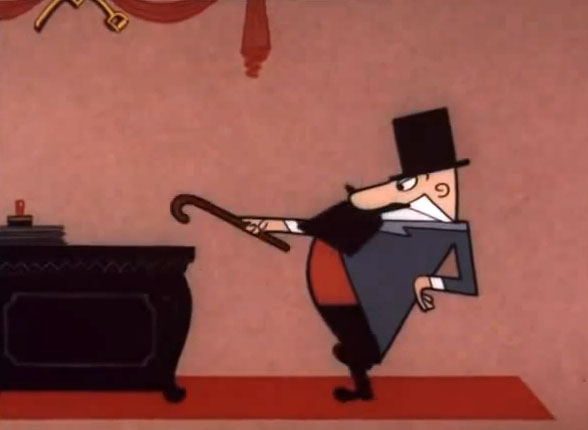
LA PETITE PARADE
Released March 6th, 1959. Director: Seymour Kneitel. Animation: Tom Johnson, Nick Tafuri. Story: Irving Spector. Scenics: Robert Little. Music: Winston Sharples.
I couldn’t let 1959 go without a little close up on a “cult cartoon” Paramount produced during this season. La Petite Parade isn’t really anything special, but for those of us who grew up watching the “Harveytoons” syndicated package, the film was particularly memorable due to its repetition of Monsieur Renior’s “Grand Procession” tune (Ra-ta-ta-ta-tum Army, Ra-ta-ta-ta-tum Navy, Ra-ta-ta-ta-tum, Department Sanitaire…”).
I’ve stated that this is a “cult cartoon” and that’s because, in all my years of writing about cartoons, certain films got stuck in the minds of the baby boomer generation. I Love To Singa, One Froggy Evening (which has been elevated in recent decades from “cult” film to bonified classic), Sunshine Makers – to name but a few – they all have something memorable in them that makes them stand apart. This film is one I get asked most to identify or asked where one could find it.
By the late 1950s, theatrical animation shorts had changed. Audiences expectations for a cartoon short had evolved. By the late 1950s, some Hollywood animation studios (MGM, UPA) had closed or were near death. On the flip side, independent animated shorts, from both America and from foreign countries, began appearing in theaters – and some of these were being nominated for (or winning) Academy Awards.
La Petite Parade sort-of fits in with the new thinking. It was the third of the newly minted Modern Madcaps series and was typical of the kind of material Kneitel was now looking for. Something a little sophisticated (the French aspect), something the average Joe could identify with and be annoyed at (a garbage truck dumping a pile of trash in from of your home – every day), and a silly song for the kids.
But it also had something most other contemporary Noveltoons and Modern Madcaps lacked – an original idea at its core. To that we must credit Irv Spector who submitted the story, originally titled “La Hole In Zee Street”, to Kneitel in November 1957 (see pages of his original treatment and outline below – click to enlarge). The film was a follow up to L’More L’Merrier (1957) featuring the same French Match Maker character, Monsieur Renior.
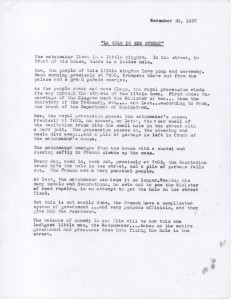

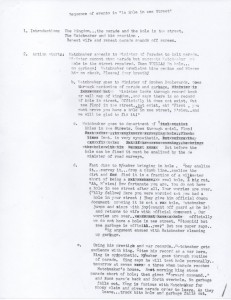
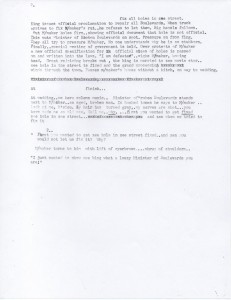
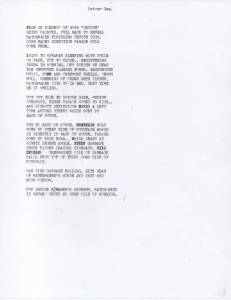
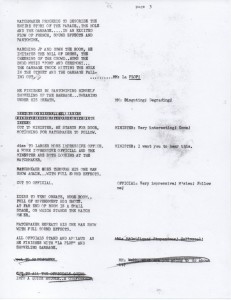
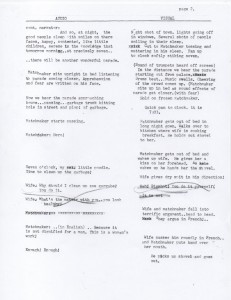
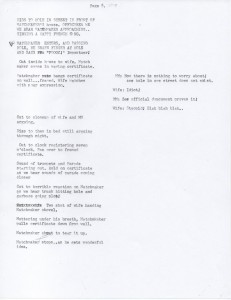

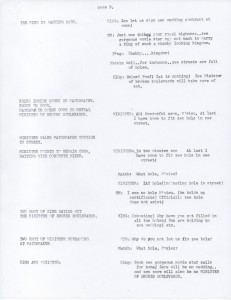

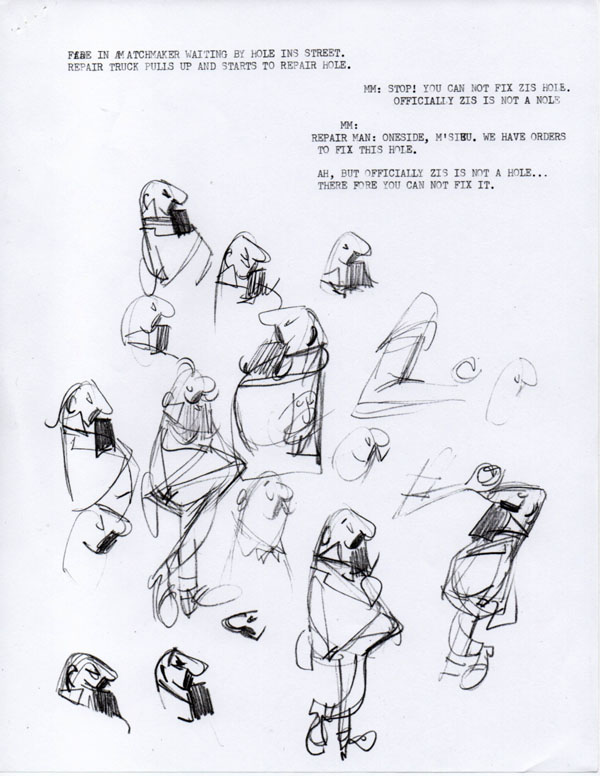
Next, Spector would do story sketches – and later a full story board (examples and samples below):
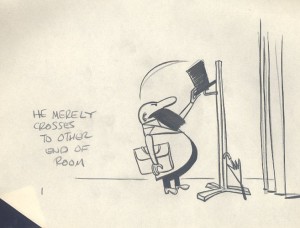



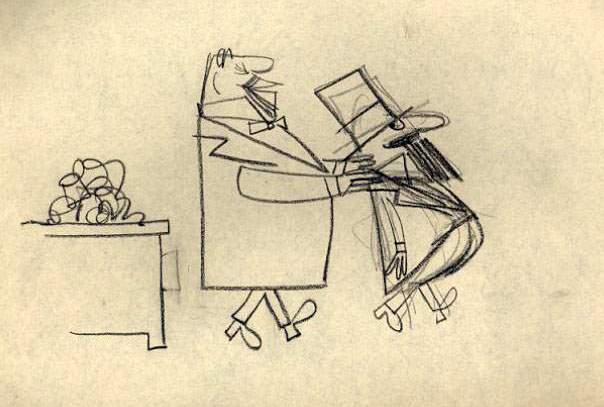

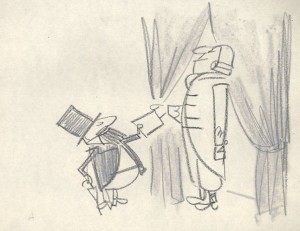

The film was produced in 1958. The cue sheet (below) was submitted on January 27th 1959. The finished film released on March 6th 1959. The final product is embed below.
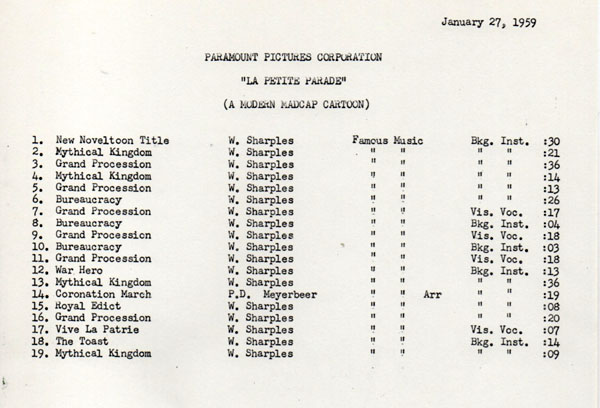
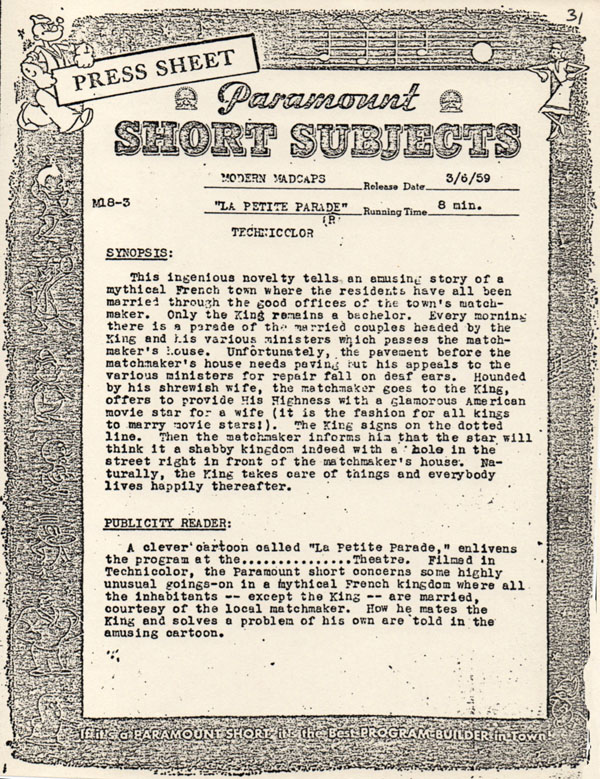
NEXT WEEK: Paramount Cartoons 1960



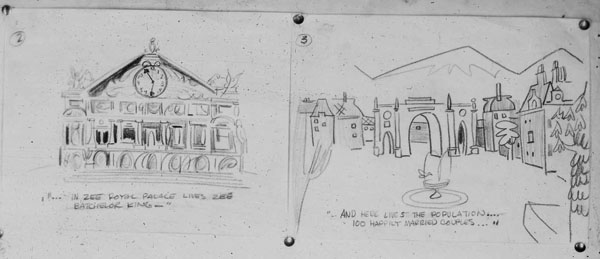

 Jerry Beck is a writer, animation producer, college professor and author of more than 15 books on animation history. He is a former studio exec with Nickelodeon Movies and Disney, and has written for The Hollywood Reporter and Variety. He has curated cartoons for DVD and Blu-ray compilations and has lent his expertise to dozens of bonus documentaries and audio commentaries on such. Beck is currently on the faculty of CalArts in Valencia, UCLA in Westwood and Woodbury University in Burbank – teaching animation history. More about Jerry Beck [
Jerry Beck is a writer, animation producer, college professor and author of more than 15 books on animation history. He is a former studio exec with Nickelodeon Movies and Disney, and has written for The Hollywood Reporter and Variety. He has curated cartoons for DVD and Blu-ray compilations and has lent his expertise to dozens of bonus documentaries and audio commentaries on such. Beck is currently on the faculty of CalArts in Valencia, UCLA in Westwood and Woodbury University in Burbank – teaching animation history. More about Jerry Beck [







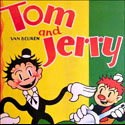
As a child, M. Renoir’s repeated demonstration of the problem outside his house was what made the cartoon memorable. As an adult, if you’ve ever had to deal with the buck-passing red tape of either a government bureaucracy or any of the modern customer service representatives at some company’s 800 number that transfer you from one department to another, you better appreciate the other parts of the cartoon (let alone that, like the Renoirs, after all that buck-passing, you’re problem is often still left unsolved).
The studio does seem to realize they had something a little bit special here, since the short with original titles (available here on Daily Motion) clocks in at a whopping 8:19 — about two minutes longer than your average 1950s Paramount cartoon, and more than a minute longer than the ones being put out by Warners in 1959 (and of course, the contemporary spin on the temporary resolution of the hole-in-the-street problem was the 1956 marriage of Grace Kelly to Prince Rainier of Monaco, which still would have been in the pop culture spotlight when Spector made his story pitch to Kneitel a year later).
That print of La Petite Parade that you refer to on DailyMotion is, for the record, a fan “restoration job”. It’s opening Paramount Modern Madcap title is off a later Eastman release (the credit for “Technicolor” is noticeably missing), there is no proper dissolve between the “Modern Madcap” title to the “credits” card, (the abrupt cut from the title to the credits was one of those annoying things that Harvey did when it replaced the original opens) and the ‘La Petite Parade‘ title card is clearly a “freeze frame” with the Paramount copyright line nicely ‘photoshopped’ in.
Here is what the original title WITH the Technicolor credit looked like:
You’re right on the recreation, though as far as the jump cut to the credits, I think that’s there in a couple of post-1960s Irv Spector Modern Madcaps you posted back during the Cartoon Brew days, “The Plot Sickens” and “No Ifs, Ands or Butts” (I’m assuming those are original titles, though that doesn’t mean they did it the same way in 1959, and they were back to the dissolve to the credits by 1963).
(the abrupt cut from the title to the credits was one of those annoying things that Harvey did when it replaced the original opens) and the ‘La Petite Parade‘ title card is clearly a “freeze frame” with the Paramount copyright line nicely ‘photoshopped’ in.
It’s a shame they did that. Especially if the titles had a bit of movement or simply dissolved to the start of the cartoon like “Chew Chew Baby” had.
Again, I point out the voice of M. Renoir, who was also used for translating Osamu Tezuka cartoons to English. His voice is what makes this cartoon interesting, and he was a reason for my enjoyment of the ASTRO BOY cartoons as well.
Voiced by Gilbert Mack.
Now I wish Astro Boy was animated in a Paramount style of this period! Thanks for putting that mental image in my head!
Monsieur Renior’s song has become the stuff of LEGEND amongst my fellow cartoon fans from the 1970s! Amusing how the renowned matchmaker & his wife sleep in separate beds: IN SEPARATE ROOMS, too, I might add!
Zis cartoon eez a classic! Jerry, who does the other voices in this cartoon other than Gilbert Mack as Renoir?
IMDB has Jack Mercer credited with other male voices in the cartoon but the King and his announcer really come across as Jack. Mae Questel was still doing voices at the studio and she may be Mrs. Renoir but I can’t find any definite credit for her. Hopefully the site’s voice experts will clear this up.
Cue #13, “Mythical Kingdom”, was also added to the “cue package” Winston Sharples and Hal Seeger assembled for other cartoon studios. It also turned up in the 1964 “King and Odie” episode “The King Camps Out”.
thank you for writing about this cartoon and for showing it. I remember the silly song very well! The rest of the plot, about the matchmaking, apparently went right over my four-year-old head. Thanks for the memories.
Hello to all, my name is Pedro T. Maldonado and I remember, as a young boy, how I could not wait till school was over on Friday cause I knew the next day would be Saturday. I am so sure that everyone who knew Saturday Cartoones couldn’t wait till they came on. Memories come to mind when I suddenly rememberd the one cartoon La Petite Parade. I am so glad that You Tube still has it. Man, it brought so many memories that will never age, cause our era has past and now those memories are hidden away in our hearts. Just want to say that’s how this little boy came to learn the English language. Thanks to all.